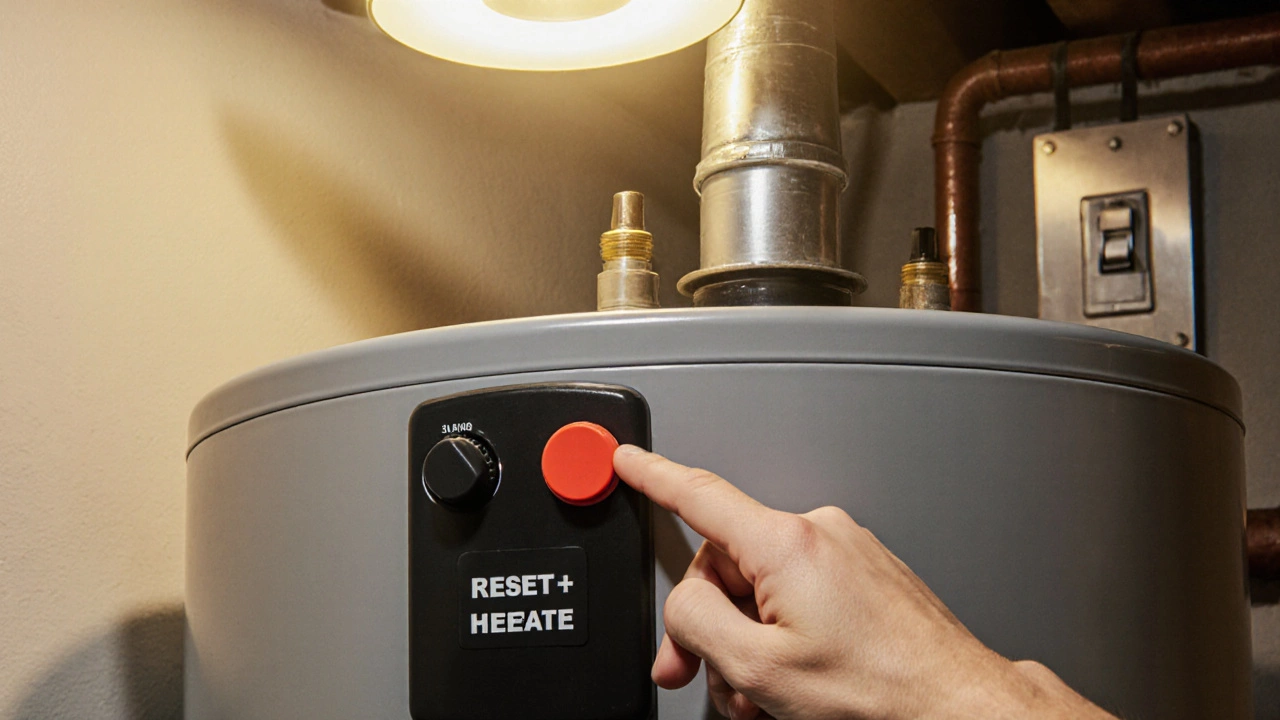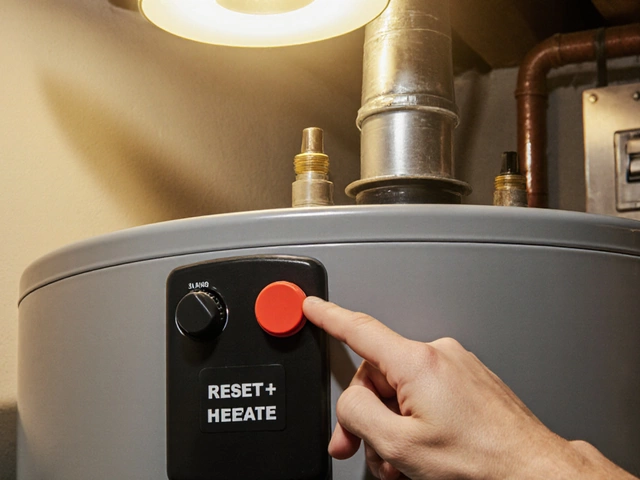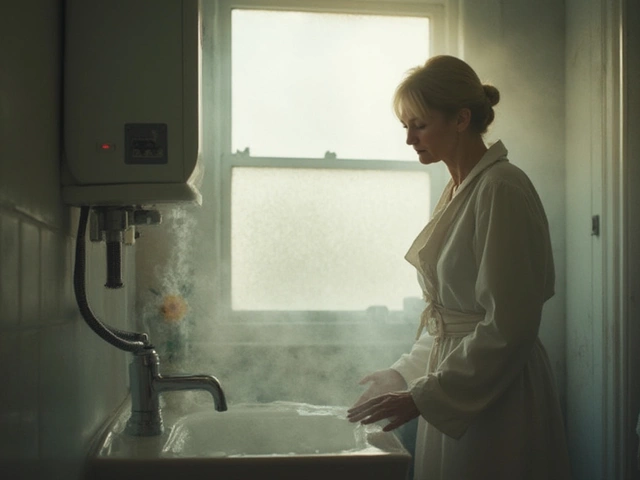Hot Water Heater Reset Guide
Before You Begin
- Turn off power (electric) or gas supply before resetting
- Allow tank to cool for 15 minutes
- Check for leaks around the pressure relief valve
- Ensure the area is dry and well-ventilated
What type of water heater do you have?
Electric Water Heater
Look for a power cord and 240-V breaker
Gas Water Heater
Look for gas pipe and vent pipe at the top
If your shower is suddenly cold or the tank is making weird noises, you’ve probably hit the dreaded "no‑heat" sign on your hot water heater a household appliance that stores and heats water for domestic use. Before you start ripping panels apart, try the simplest fix: a reset.
Why a Reset Might Be Needed
Modern water heaters are equipped with safety devices that shut the unit down when something goes out of range. The most common culprits are a tripped high‑limit switch a thermostat that cuts power when water temperature exceeds a safe limit or an overloaded circuit breaker an electrical switch that protects the circuit from overcurrent. Resetting tells the heater, "Okay, everything's fine now, you can go back to heating".
Safety First: What to Check Before You Reset
- Turn off the power at the breaker (electric) or shut off the gas supply (gas) to avoid sparks.
- Let the tank cool for at least 15 minutes - the water can be scalding hot.
- Inspect the pressure relief valve a safety valve that releases excess pressure to prevent tank rupture for leaks.
- Make sure the area around the heater is dry and well‑ventilated.
Identifying Your Heater Type
Two major families dominate residential installs:
- Electric water heater - uses one or more heating elements resistive coils that convert electricity into heat immersed in the water.
- Gas water heater - burns natural gas or propane via a gas control valve regulates gas flow to the burner and a pilot flame.
Look for a label on the side of the tank: "Electric" or "Gas". If you see a power cord and a 240‑V breaker, you’ve got an electric unit. If you see a gas pipe and a vent pipe at the top, it’s gas.
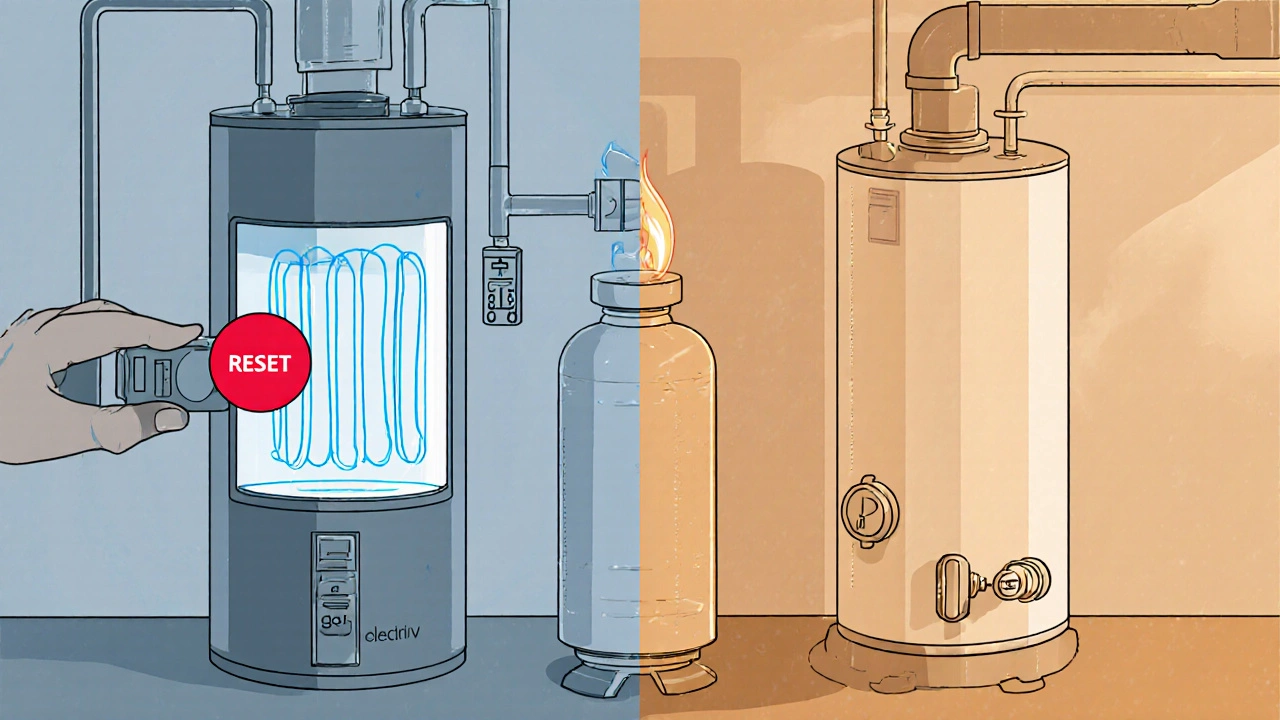
Resetting an Electric Water Heater
- Locate the reset button a red or black button on the high‑limit thermostat on the side of the tank, usually near the top.
- Push the button firmly. You’ll feel a click - that’s the switch springing back.
- Return to the breaker panel and flip the dedicated 240‑V breaker back to "ON".
- Wait 30 minutes for the tank to start heating. You should hear a gentle humming from the element.
If the button pops out again after a few minutes, the water may be overheating because of a faulty thermostat the device that senses water temperature and tells the element when to turn on or a buildup of sediment insulating the tank.
Resetting a Gas Water Heater
- Find the thermostat knob the dial that sets the desired water temperature, usually labeled 120°F, 140°F, etc. and turn it to the "OFF" position.
- Locate the pilot light a small, continuously burning flame that ignites the main burner. If the pilot is out, follow the manufacturer’s instructions to relight it (usually a button, a knob, and a hold‑for‑30‑seconds sequence).
- Once the pilot is stable, turn the thermostat knob back to your desired temperature (usually 120°F or 130°F).
- If the unit has a built‑in high‑limit switch the same safety thermostat described for electric units, press the red reset button on the side of the tank.
- Give the heater 20‑30 minutes to warm up and verify hot water at a faucet.
Gas heaters also have a flame sensor a safety component that detects the pilot flame and shuts off gas if the flame is missing. If the flame keeps shutting off after a reset, the sensor may need cleaning or replacement.
After the Reset - Testing & Troubleshooting
- Run hot water from the nearest faucet for 2‑3 minutes. If the water reaches the set temperature, the reset worked.
- If the heater cycles off again within an hour, note any error codes on the digital display (common on newer electric models) and consult the manual.
- Check the temperature sensor a probe that feeds water temperature data to the control board. A stuck sensor often reads too high, causing premature shutdowns.
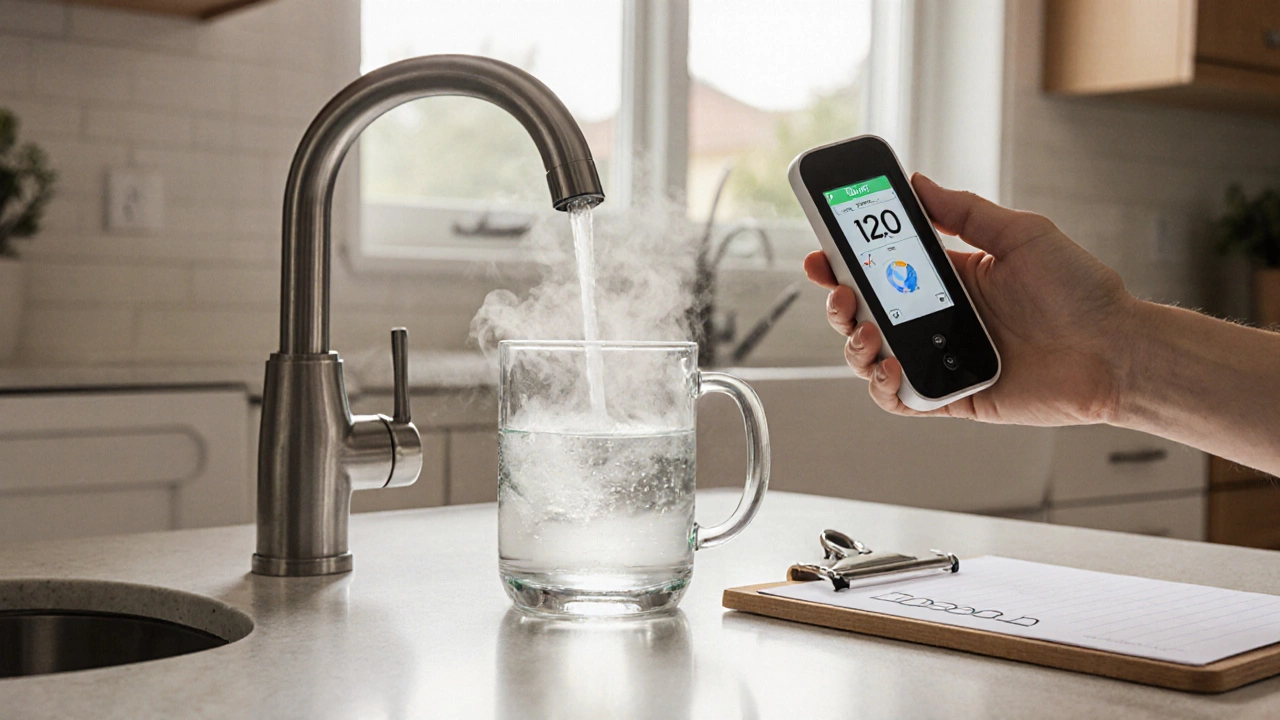
Common Pitfalls & When to Call a Pro
Resetting solves a lot of hiccups, but not every issue. Consider professional help if you encounter any of these:
- Repeated tripping of the reset button after multiple attempts.
- Visible corrosion or water leaks around the anion rod a sacrificial metal rod that prevents tank rust.
- Smell of gas after attempting a gas heater reset - shut the gas supply and call a licensed technician immediately.
- Frequent breaker trips, which could indicate wiring problems or an oversized heating element.
Quick Reset Checklist
- Turn off power (breaker) or gas supply.
- Allow tank to cool for 15 minutes.
- Locate and press the reset hot water heater button (red/black).
- Restore power or gas and set thermostat to desired temperature.
- Verify hot water at a faucet after 30 minutes.
| Step | Electric Heater | Gas Heater |
|---|---|---|
| Power/Gas Off | Switch off 240‑V breaker | Shut off gas valve |
| Locate Reset | Press red/black button on high‑limit switch | Press red button (if present) after confirming pilot |
| Restore Power/Gas | Flip breaker back ON | Turn gas valve ON, relight pilot if needed |
| Set Temperature | Adjust thermostat dial | Turn thermostat knob to 120‑130°F |
| Verify | Check hot water after 30min | Check hot water after 20‑30min |
Frequently Asked Questions
What does it mean when the reset button keeps popping out?
It usually signals that the water temperature is exceeding the safe limit, often because of a faulty thermostat, a broken heating element, or heavy sediment buildup insulating the tank.
Can I reset a water heater without turning off the power?
Never. Resetting while power or gas is still on can cause sparks or a sudden flame ignition, creating a safety hazard.
How often should I perform a reset?
Only when the heater shuts down unexpectedly. Frequent resets indicate an underlying issue that needs repair.
Is the reset button the same as the temperature control?
No. The reset button is a safety override on the high‑limit switch, while the temperature control sets the desired water temperature.
My electric heater still won’t heat after a reset. What’s next?
Check the breaker for a partial trip, inspect the heating elements for burns, and verify that the thermostat isn’t stuck. If those look fine, call a licensed electrician.

